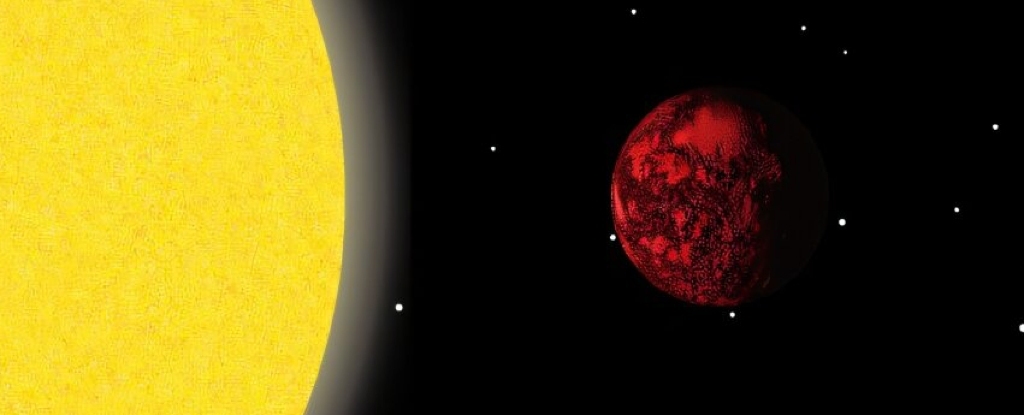Key Takeaways:
I. K2-360 b's density, comparable to lead, distinguishes it from other super-Earths.
II. The presence of K2-360 c suggests a history of high-eccentricity migration, pushing K2-360 b into its current close orbit and contributing to atmospheric loss.
III. While K2-360 b itself is uninhabitable, its study provides crucial insights into planetary evolution and expands our understanding of habitability beyond traditional parameters.
SpaceX is in talks to sell insider shares in a transaction valuing the rocket and satellite maker at about $350 billion, a significant jump from its $210 billion valuation earlier this year. This potential tender offer highlights the post-election gains across Elon Musk’s businesses, including a 40% surge in Tesla's stock price since November 5th. While SpaceX focuses on its Starship program and dominates the commercial space launch market, this valuation rivals major public companies and underscores investor confidence in Musk's ventures, particularly given his deepening ties with President-elect Trump. However, amidst this financial surge, a recent discovery challenges our understanding of planetary formation: K2-360 b, an ultra-dense super-Earth, presents a new paradigm in exoplanet evolution. Its extreme density, tight orbit, and potential history of atmospheric stripping raise fundamental questions about how planets form and evolve. This article will explore the unique characteristics of K2-360 b, comparing it to Earth and other known exoplanets, and discuss the implications for the search for habitable worlds.
Density's Riddle: What Lies Beneath K2-360 b?
K2-360 b boasts a density of 11 g/cm³, significantly higher than Earth's 5.5 g/cm³. This extreme density sets it apart from other known super-Earths, such as Kepler-10c (3.14 g/cm³) and TOI-6651b (2.52 g/cm³), prompting questions about its internal structure and formation.
The high density points towards a composition dominated by a massive iron core, potentially comprising up to 48% of its mass. This contrasts with Earth, where the core makes up a smaller proportion. The possibility of other heavy elements further complicates the picture, highlighting the need for more detailed analysis.
The traditional core accretion model, where planets form through the gradual accumulation of solid material followed by gas accretion, struggles to explain K2-360 b's density. This suggests an alternative formation pathway, potentially involving the loss of a substantial gaseous envelope, leaving behind a dense, iron-rich core.
Determining the precise composition of exoplanets remains a significant challenge. Future missions like the James Webb Space Telescope offer hope, with its advanced spectroscopic capabilities promising more detailed insights into atmospheric and surface composition, crucial for refining our understanding of K2-360 b's formation.
A Close Encounter: K2-360 b's Perilous Orbit
K2-360 b completes an orbit in just 21 hours, placing it extremely close to its star. This proximity subjects it to intense stellar radiation and tidal forces, making its current location unlikely to be its birthplace and suggesting a history of inward migration.
K2-360 c, a more massive companion planet with a 9.8-day orbit and a minimum mass of 15 Earths, likely played a key role in K2-360 b's migration. Gravitational interactions between the two planets, potentially through high-eccentricity migration, could have driven K2-360 b inwards.
As K2-360 b migrated inwards, it would have experienced increasingly intense stellar radiation and tidal forces. These extreme conditions could have stripped away its atmosphere, particularly lighter elements, leaving behind the dense, iron-rich core observed today. Processes like stellar winds, coronal mass ejections, and photoevaporation could have contributed to this atmospheric loss.

While high-eccentricity migration offers a plausible explanation, current models have limitations in fully capturing the complexities of such systems. Further research, incorporating more sophisticated models and detailed observations, is needed to refine our understanding of planetary migration and atmospheric evolution.
Beyond the Goldilocks Zone: Rethinking Planetary Habitability
K2-360 b's extreme environment, characterized by intense stellar radiation and a likely lack of a substantial atmosphere, renders it uninhabitable for life as we know it. However, its study offers valuable insights into the diverse factors that shape planetary habitability.
K2-360 b challenges the traditional concept of the 'habitable zone,' demonstrating that factors beyond orbital distance, such as planetary interactions and atmospheric evolution, play crucial roles in determining a planet's potential to support life. This expands our search for life beyond Earth to consider a wider range of planetary environments.
The Future of Exoplanet Exploration
K2-360 b stands as a testament to the unexpected diversity of exoplanetary systems and the complexities of planetary evolution. Its extreme properties challenge existing theories and underscore the need for continued exploration. Future missions, equipped with advanced technologies like those of the James Webb Space Telescope, promise to reveal further secrets of K2-360 b and other extreme worlds, ultimately refining our search for life beyond Earth and expanding our understanding of our place in the universe.

